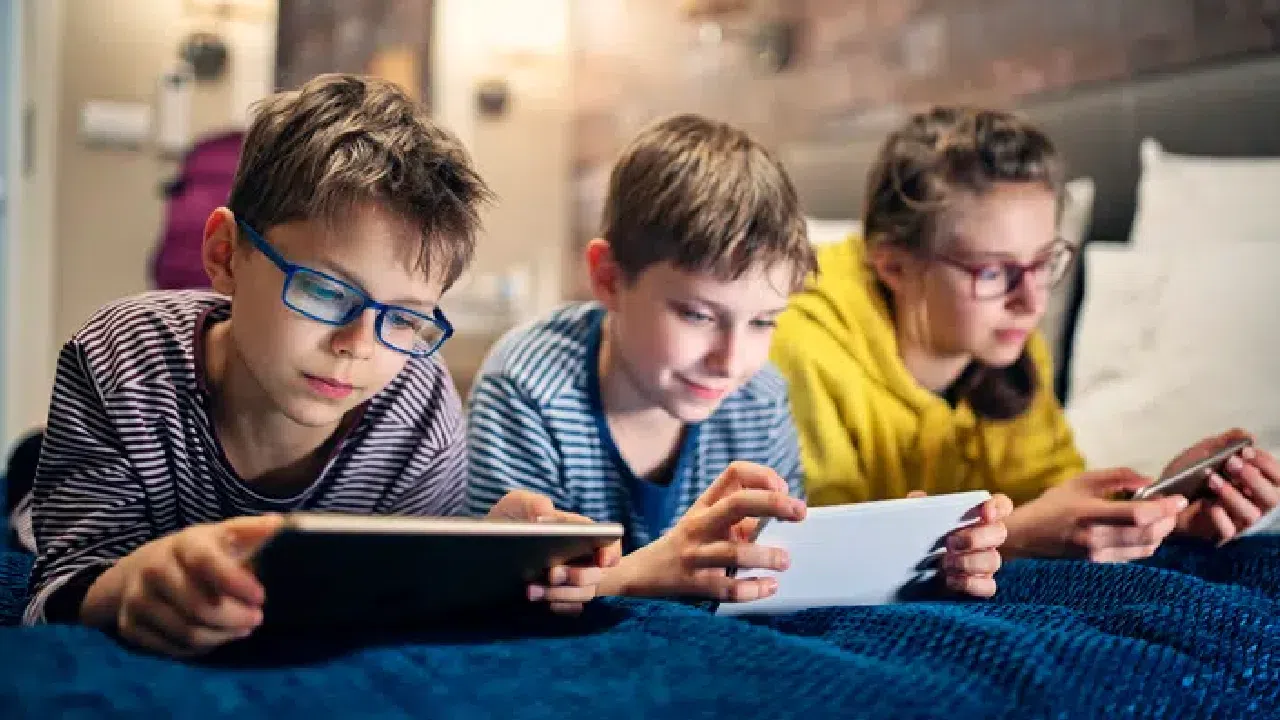All parents struggle with screens during the unstructured summer months. How much is too much? Should I limit it? Should I stop stressing?
We’re not here to tell you what you should or shouldn’t do – that’s up to you to decide – but rather to provide you with strategies to help you manage whatever the level of screen time you’ve determined is right for your kids. Because no matter what you choose, kids do best when expectations are clear. So review these strategies, decide on the best fit, and share the plan with your kids.
Screen time doesn’t have to be stressful. It just needs to be clear.
Strategy #1: Screen Free Summer
Admittedly, this isn’t for everyone. But if you’ve ever dreamed of a screen free summer, it’s more possible than you think. The first three days will be the hardest – after a week it will become the new normal. So if you think your kids need a complete detox for the summer, follow these guidelines on how to make the transition and break your kids’ screen time addiction.
Strategy #2: Earn Your Screens
This is a popular approach in that kids aren’t allowed screens until they complete a list of tasks/responsibilities. Make a list of things you’d like them to do every day – whether it’s simple things like getting dressed and brushing teeth, more complex like completing assigned chores, or educational like reading for a prescribed period or spending time outside. Suggestions abound on Pinterest for this strategy! Some parents have unlimited screen time after the checklist is complete, limit it to a certain number of hours, or allow their children to trade reading time for screen time on a minute-by-minute exchange. For example, 30 minutes of reading = 30 minutes of screens.
Strategy #3: Self-Managed Screen Time
This strategy is similar to the previous one, except that children are expected to self-manage their screens within their other responsibilities. Instead of having to complete a list of tasks before using screens, they can choose to use up their allotted screen time at any time of the day. The only catch is that if they don’t complete the rest of their responsibilities by day’s end, they lose their screen time privilege the following day.
Full disclaimer – this is the strategy we’ve implemented in our house and it’s worked great to help them learn to self-manage technology. The first day we implemented I had one who blew through her 2 hours by 9 am, while the other diligently completed his task list so he could enjoy his screen time without worrying about the chores that came next. As time has gone on, they’ve both moderated. Sometimes they use their time to play games together, or split their screen time in two to enjoy time in the morning and the afternoon. Regardless, they still get all their business done and I haven’t had to take away screen time yet.
Strategy #4: Reward Non-Screen Time
If screens are a big part of your child’s day and you don’t want to severely limit their time or battle them on the regular, this is a way to entice them to find non-screen activities to engage in. Allow them to accumulate points for every hour or half-hour of non-screen activities, and bank them towards a larger goal. For example, 50 points = a summer trip to the water park or 10 points = a treat from the store. You know your child best, so get creative with your non-screen rewards.
Strategy #5: Scheduled Screens
Limit screens to specific hours of the day. For example, cartoons are OK in the morning but the TV needs to go off by 10am. Or, screens are only allowed after 7pm. Or, screens are OK from 1-3 in the afternoon while the baby is napping so mama can have a break. You set the expectations for your family, but make sure your kids know the rules so they don’t ask for screens incessantly at other times.
Strategy #6: Unlimited Screens
Let’s clarify that giving access to “unlimited screens” doesn’t necessarily mean they’ll be using them all day. It just means that if they want to, they can. Honestly, this is a legit strategy for a lot of parents right now who are trying to keep their kids busy while working full-time from home. Sometimes you just have to declare that right now, unlimited access to screens is how you roll. Own it and let go of the guilt.
Screen time management is hard. There’s not a perfect solution, and individual children react differently to screens (or lack thereof). Make the best choice for your family this summer and run with it. Don’t feel like you have to do the same thing your neighbor is doing, or struggle with guilt that your kids are doing more or less than other kids. In fact, most of our uneasiness usually comes when it feels out of control. Take back that control by making a clear and confident declaration about what usage looks like for your family. And once you do that, your guilt will ease.
What’s your approach to summer screen time? Tell us in the comments!
PIN THIS!
RELATED CONTENT:

















